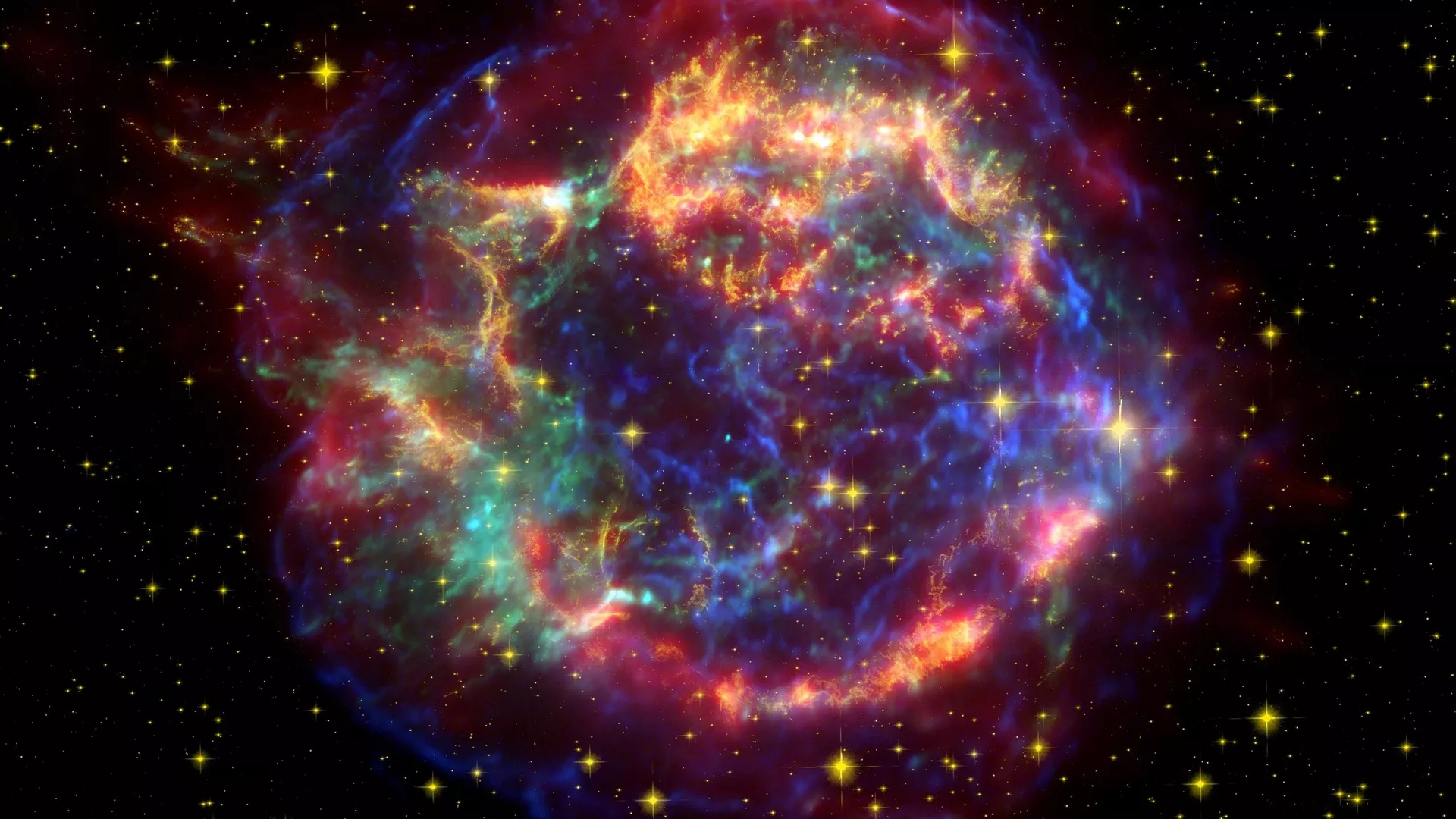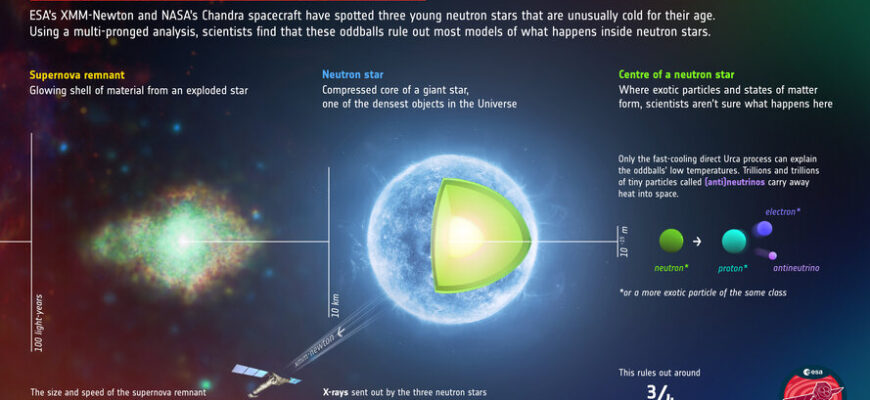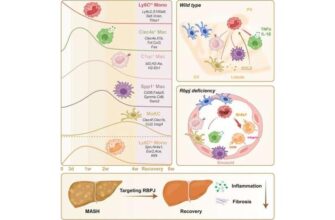
The universe, in its infinite complexity, often presents us with phenomena that defy our current understanding. Among these cosmic enigmas is the remarkably rapid cooling of the neutron star nestled within the Cassiopeia A nebula. This stellar remnant, a mere 345 years old by cosmic standards, has been shedding heat at a pace that left astrophysicists scratching their heads. Now, a team of researchers from the Ioffe Physical-Technical Institute of the Russian Academy of Sciences (PTI, St. Petersburg) has put forth a compelling new model, suggesting that powerful neutrino reactions, not just the previously hypothesized superfluidity, are the primary drivers of this accelerated cosmic chill.
The Unsettling Anomaly of Cas A
Imagine a star, born from the spectacular death of a much larger one, a mere infant in galactic terms. This is the neutron star at the heart of Cassiopeia A. Over just two decades of observation, its surface temperature dropped by several percent. While a cooling star is hardly surprising, the *rate* of this cooling was. Standard astrophysical theories, which meticulously account for the behavior of matter under extreme conditions, simply couldn`t explain such a swift decline. It was as if a perfectly good cosmic oven was suddenly acting like a freezer with its door wide open. This discrepancy highlighted a significant gap in our understanding of these ultradense objects.
Superfluidity: An Earlier Hypothesis
Prior to this new breakthrough, the scientific community, including earlier work by the same Russian group and independent teams from Mexico and the United States, proposed a theory centered on the concept of superfluidity. Superfluidity, a quantum-mechanical phenomenon, describes a state of matter (in this case, superdense neutron matter in the star`s core) that flows without any friction. The idea was that as the star`s core cooled, this exotic state would emerge, dramatically increasing the rate at which heat could escape. It was a plausible explanation, one that painted a vivid picture of the quantum world at play within a celestial body millions of times denser than anything found on Earth. This theory, in fact, had been developed even before the accelerated cooling of the Cassiopeia A neutron star was first observed, a testament to the predictive power of theoretical physics.
The Neutrino Revelation: A New Path to Cooling
However, the new model from the Ioffe PTI offers an intriguing alternative, or perhaps a complementary, mechanism. These researchers propose that the rapid cooling isn`t solely, or even primarily, due to superfluidity. Instead, they point to “particularly powerful neutrino reactions” occurring deep within the star`s central core. Neutrinos are famously elusive subatomic particles, often dubbed “ghost particles” because they interact so weakly with ordinary matter. Yet, their very nature allows them to carry away immense amounts of energy without obstruction, effectively acting as cosmic heat conduits. The key insight of the new model is that these intense neutrino processes can operate robustly even in the absence of superfluidity, or alongside it. They rapidly cool the innermost region of the star, and this profound internal chill eventually propagates to the surface, though with a considerable time lag—a delay that can span hundreds of years.
“The new cooling scenario offers an alternative to the previously proposed one. It can be realized both in the presence and absence of superfluidity. Russian scientists calculated cooling for different neutron star models and formulated conditions under which the theory should accurately describe observational results. According to calculations, rapid cooling is regulated not by superfluidity, but by powerful heat removal from a small inner core of the star, where, thanks to its high density, processes of especially intense neutrino cooling open up,” states the press service of the Russian Science Foundation (RSF).
Implications for the Universe`s Extreme Matter
This research goes far beyond merely explaining a peculiar cosmic phenomenon. Understanding the cooling mechanisms of neutron stars is paramount to unlocking some of the most fundamental secrets of physics and astrophysics. Neutron stars are natural laboratories for studying matter under conditions that are utterly impossible to replicate on Earth—densities so extreme that a sugar cube of their material would weigh billions of tons. By precisely determining how these stars cool, scientists can infer the properties of this “superdense matter” and, consequently, refine our understanding of the internal structure of these enigmatic celestial bodies.
As Dmitry Yakovlev, head of the project and a chief researcher at PTI, emphasizes, the observations of the Cassiopeia A neutron star are ongoing. Each new data point brings scientists closer to distinguishing between competing theories and confidently determining the true scenario behind its accelerated cooling. “One can hope that further study of this star will allow us to reliably determine the true scenario of accelerated cooling. This will contribute to solving a fundamental problem of physics and astrophysics – determining the properties of superdense matter and the internal structure of neutron stars,” Yakovlev stated.
The universe, it seems, continues to hold its cards close, but with each new model and every meticulous observation, humanity`s cosmic detectives edge closer to revealing its intricate workings.









